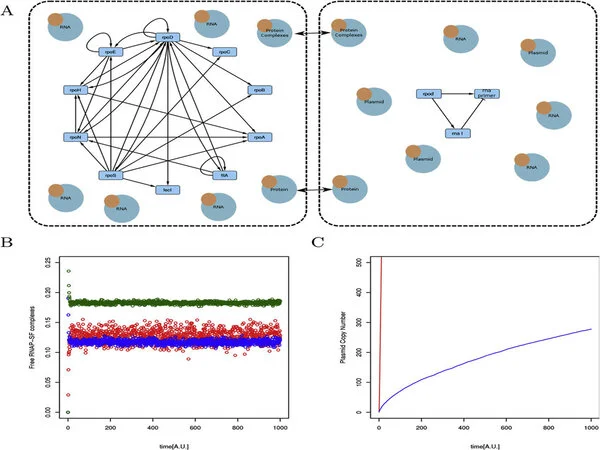A recently released paper offers advice on creating reliable mathematical models for gene regulation networks. Over the last 20 years, biology and medicine experts have used Boolean network models to simulate complex systems and uncover answers, such as new colorectal cancer treatments.
“Boolean network models operate under the assumption that each gene in a regulatory network can have one of two states: on or off,” states Claus Kadelka, a systems biologist and associate professor of mathematics at Iowa State University.
Kadelka and undergraduate student researchers recently published a paper that identifies the common design principles in these mathematical models of gene regulation networks. He claims that demonstrating how traits have evolved over millions of years helps “guide the process of accurate model building” for mathematicians, computer scientists, and synthetic biologists.
“Evolution has shaped the networks that control our cells’ decision-making in highly particular and optimized ways. Synthetic biologists attempting to construct circuits that fulfill a certain purpose can benefit from this evolution-inspired design,” adds Kadelka.
A major benefit of the research is that it collects and standardizes Boolean gene regulatory networks from many sources and presents them, along with a set of analysis tools, through a centralized web interface. This expands the accessibility of the data, and the web interface makes the analysis tools useable without a programming background.
Dr. Schmidt
Gene regulatory networks determine what happens and where it happens in an organism. For example, they prompt cells in your stomach lining — but not in your eyes — to produce hydrochloric acid, even though all the cells in your body contain the same DNA.
On a piece of paper, Kadelka draws a simple, hypothetical gene regulatory network. Gene A produces a protein that turns on gene B, which turns on gene C, which turns off gene A. This negative feedback loop is the same concept as an air conditioner that shuts off once a room reaches a certain temperature.
But gene regulatory networks can be large and complex. One of the Boolean models in the researchers’ dataset involves more than 300 genes. And along with negative feedback loops, gene regulatory networks may contain positive feedback loops and feed-forward loops, which reinforce or delay responses. Redundant genes that perform the same function are also common.
Among these and other design principles highlighted in the new paper, Kadelka says one of the most abundant is “canalization.” It refers to a hierarchy or importance ordering among genes in a network.

Accessible data, bolstered with undergraduate research
Kadelka emphasizes that the project would have been difficult to complete without the First-Year Mentor Program, which matches students in the Iowa State Honors Program with research opportunities across campus.
Undergraduate students helped Kadelka develop an algorithm to scan 30 million biomedical journal articles and filter those most likely to include Boolean biological network models. After reviewing 2,000 articles one by one, the researchers identified around 160 models with close to 7,000 regulated genes.
Addison Schmidt, now a senior in computer science, is one of the paper’s co-authors. When he worked on the project as a freshman in 2021, he created an online database for the project.
“A major benefit of the research is that it collects and standardizes Boolean gene regulatory networks from many sources and presents them, along with a set of analysis tools, through a centralized web interface. This expands the accessibility of the data, and the web interface makes the analysis tools useable without a programming background,” says Schmidt.
Kadelka says systems biologists have used the database for their research and expressed gratitude for the resource. He plans to maintain and update the website and investigate why evolution selects for certain design principles in gene regulatory networks.
Schmidt says working on the project as a freshman helped him broaden his knowledge of the Python programming language and grow more comfortable applying his talents to research.
“This project also motivated me to pursue other research at Iowa State where I developed other tools and, coincidentally, another website to present them,” Schmidt said. He expresses gratitude for Kadelka’s mentorship and hopes that the First-Year Mentor Program will continue to promote student research possibilities at Iowa State.
















